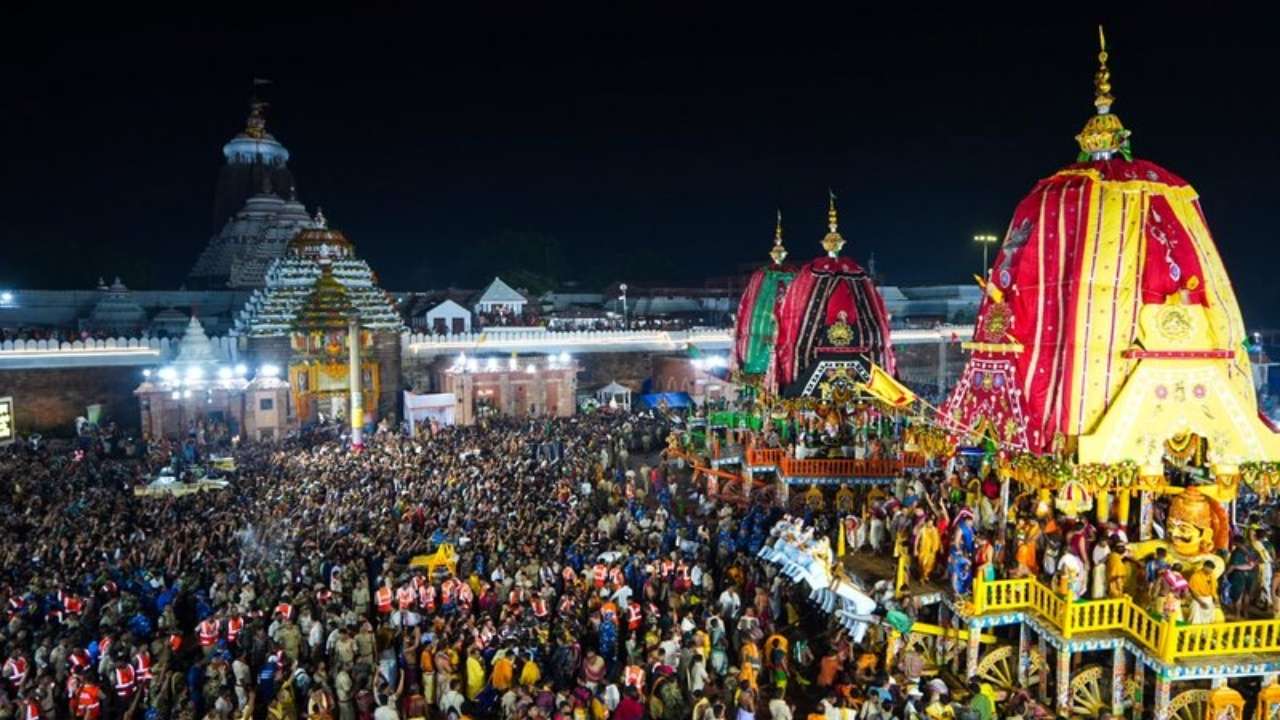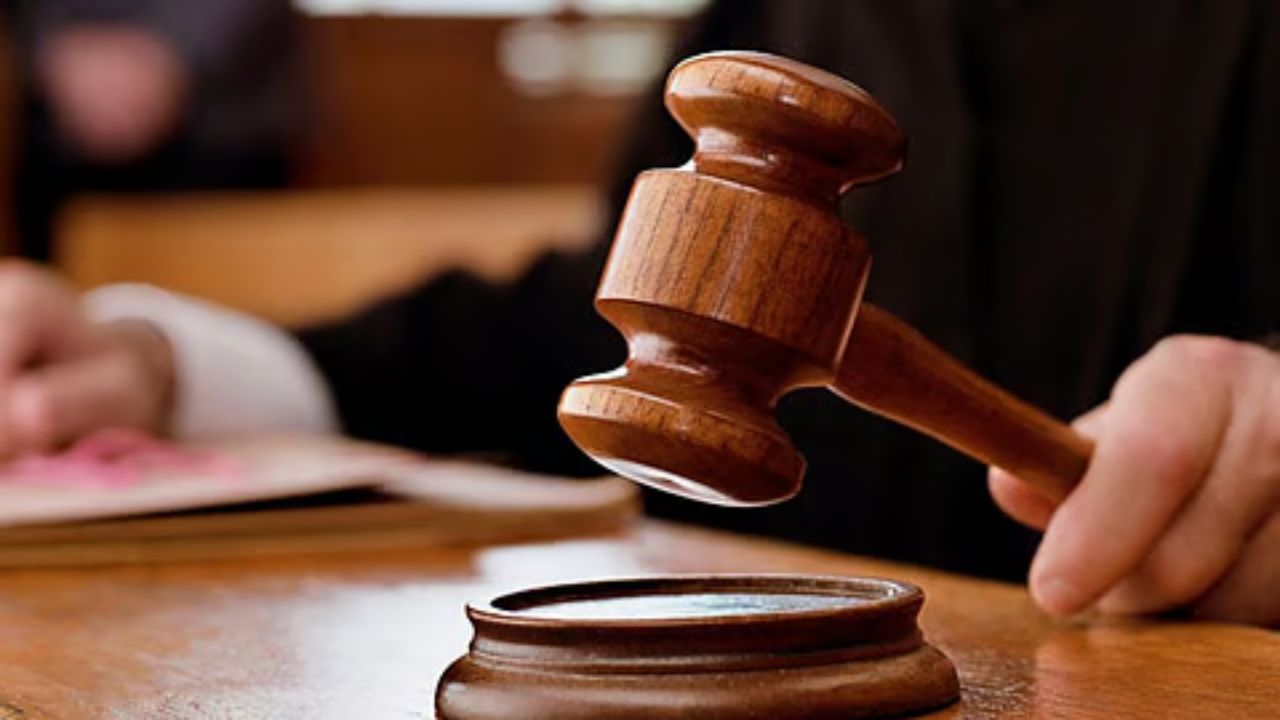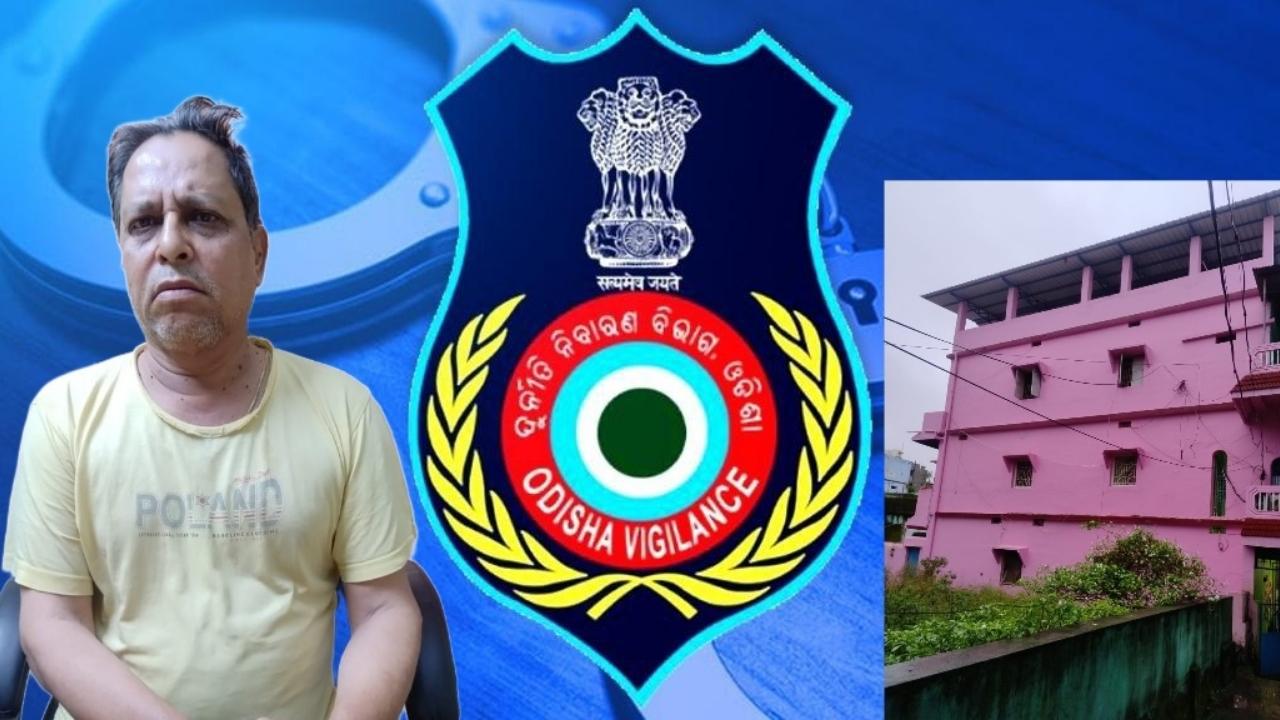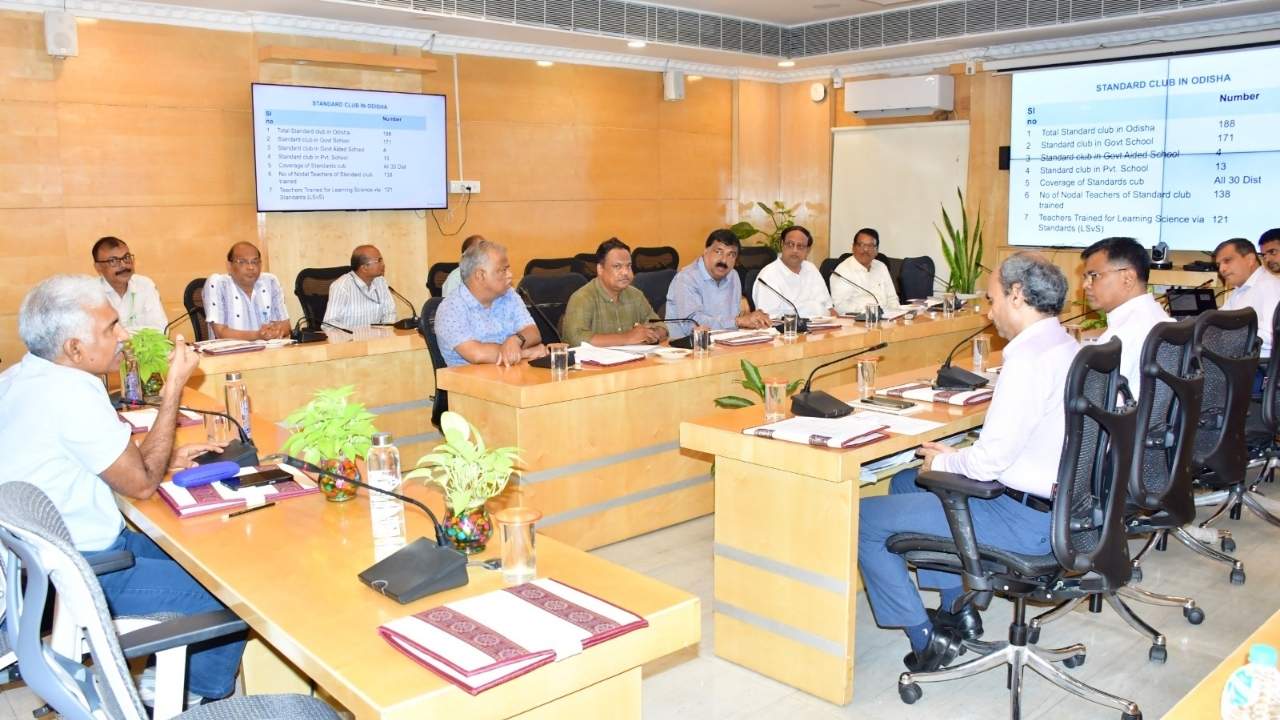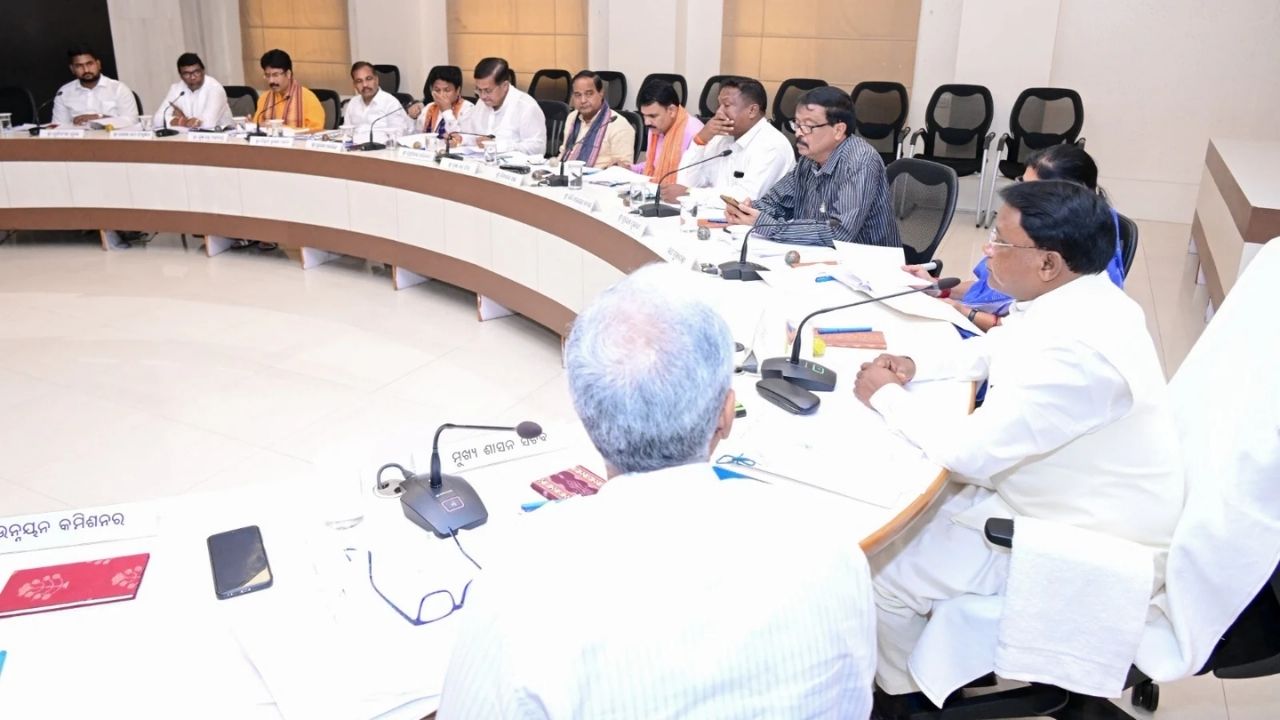The peaceful and spiritual ambiance of the Puri Srimandir (Jagannath Temple), one of India’s most revered temples, was recently disturbed by a shocking security breach. A man was caught using a spy camera hidden in his spectacles to record the inner sanctum of the temple—a clear violation of temple rules and an alarming indicator of security vulnerabilities. The incident has raised serious questions about the current state of security at religious sites in India, particularly at the Puri Jagannath Temple. This article will explore the implications of this event, discuss current security practices, and offer practical advice for both visitors and officials to ensure the temple remains a safe and sacred place.

Spy Camera Incident in Puri Srimandir
| Key Topic | Details |
|---|---|
| Incident Overview | A man was caught filming inside the Puri Jagannath Temple using a hidden spy camera in his glasses. |
| Date of Incident | The event occurred in July 2025. |
| Temple Security | Puri Srimandir has strict rules prohibiting photography and videography within its premises. |
| Authorities’ Response | The Odisha government is considering the installation of anti-drone technology and enhancing overall security. |
| Potential Threats | Unauthorized photography, drone activities, and individuals scaling temple walls have raised concerns. |
| Solutions in Progress | The Shree Jagannath Temple Administration (SJTA) is reviewing and upgrading security measures. |
| Public Safety Measures | Enhanced security protocols to safeguard the sanctity of the temple and its visitors. |
| Official Resources | Puri Jagannath Temple Official Website |
The recent spy camera incident at Puri Jagannath Temple highlights the growing security challenges faced by religious sites worldwide. While traditional methods of security are essential, the rise of technology requires a more nuanced and sophisticated approach. The Puri Srimandir incident serves as a reminder that the protection of sacred spaces must evolve to meet modern threats. By implementing advanced technologies, educating visitors, and enhancing security protocols, we can ensure that places like the Puri Jagannath Temple remain safe and secure for generations to come.
What Happened at Puri Srimandir?
On a recent visit to the Puri Srimandir, an individual, later identified as Abhishit Kar from Gajapati Nagar, was apprehended by the temple’s security for engaging in suspicious activity. Upon investigation, the security team found that Kar was using a hidden camera embedded in his spectacles to secretly film the interior of the temple. The footage from the hidden camera was being transmitted to his mobile phone.
The discovery is concerning, given that the temple has a strict policy against photography and videography within its sacred grounds. In addition to violating temple rules, the incident raises serious questions about the effectiveness of the current security systems in place. The Puri Jagannath Temple is one of the most visited religious sites in India, attracting millions of devotees each year, making the protection of its sanctity a high priority.
This incident is part of a series of security breaches at the temple. Recently, there have been reports of unauthorized drone activities and individuals attempting to scale the temple’s outer walls. These breaches not only violate the temple’s sacredness but also pose potential security threats, given the large crowds and the high-profile nature of the site.
The Role of Temple Security
Temple security is a critical concern at places of worship like Puri Srimandir. The rules are in place to preserve the sanctity of the temple, protect visitors, and ensure the safety of all religious practices. Here are some key points about the temple’s current security setup:
- Photography and Videography Ban: The temple has always maintained a strict no-photography rule. This is due to the belief that certain areas of the temple, especially the inner sanctum, should remain private and sacred. Unauthorized recording is strictly prohibited to prevent the exploitation or disrespect of religious practices.
- Security Personnel: The temple employs a team of security personnel to patrol its premises. They are tasked with maintaining order and preventing any illicit activities, including the use of hidden cameras or drones. The incident with the spy camera raised concerns about the readiness of these personnel to detect such devices, prompting the authorities to re-evaluate the effectiveness of their security protocols.
- Technological Advancements: With the rise of technology, especially drones and miniaturized cameras, security has become more challenging. As reported, Kar was able to hide a camera in a pair of ordinary-looking spectacles, making it difficult for human security personnel to detect. This shows that traditional methods of surveillance are no longer sufficient.

The Growing Concerns About Security at Religious Sites
Puri Srimandir is not alone in facing security concerns. Across India, various religious sites have struggled with maintaining security due to increasing numbers of visitors and the rise of advanced technology. Here are some of the broader issues facing religious sites:
Drone Surveillance
In recent years, drones have become a serious threat to the security of religious sites. They can be used to capture unauthorized footage or even drop objects into restricted areas. The Puri Jagannath Temple has also faced issues with drones flying over its premises, which prompted the Odisha government to consider implementing anti-drone technology. This is not just a concern for Puri but for other high-profile temples across India, such as the Kashi Vishwanath Temple in Varanasi and the Golden Temple in Amritsar.
Unauthorized Access and Scaling of Temple Walls
Another issue is the growing trend of individuals attempting to scale the temple walls. This presents not only a security concern but also a physical danger to the individuals involved. For instance, there have been instances where people have tried to climb the temple’s outer walls to get a better view or to take photographs. Such actions, if left unchecked, can compromise both the security and safety of the temple.
Digital and Technological Intrusions
The rise of wearable tech, like hidden cameras in spectacles or watches, has created new challenges for security teams. These devices can be used to secretly record footage without detection. The traditional method of metal detectors and bag checks is insufficient in dealing with such technological threats. Authorities need to adopt more advanced screening methods to ensure that visitors are not carrying devices capable of violating temple rules.
What Is Being Done to Address These Issues?
In response to the increasing security challenges, the Odisha government, along with the Shree Jagannath Temple Administration (SJTA), is considering several measures to enhance security at the temple. These include:
- Anti-Drone Technology: The installation of anti-drone systems will prevent unauthorized drones from entering the temple’s airspace. These systems can identify and neutralize drone threats in real time, ensuring that the sanctity of the temple remains intact.
- Upgraded Screening Procedures: To detect hidden cameras and other digital devices, the temple authorities are looking into more advanced screening techniques. This could include body scanners, more rigorous checks at entry points, and even the use of trained security personnel to identify suspicious behavior.
- Increased Surveillance and Monitoring: Cameras equipped with advanced technology can be installed to monitor all areas of the temple, both inside and outside. AI-powered surveillance systems could help detect unusual movements or hidden devices, making it easier to identify potential threats before they escalate.
- Public Awareness Campaigns: Educating visitors about the importance of following temple rules and regulations can also help in reducing security violations. Awareness campaigns can emphasize the sacredness of the temple and the potential consequences of violating the rules.
Practical Tips for Visitors
For visitors to the Puri Jagannath Temple, it is essential to be mindful of the temple’s sacred nature and the security rules in place. Here are some practical tips:
- Leave Your Devices Behind: It’s best to leave all electronic devices, including cameras, phones, and smartwatches, in a secure area before entering the temple.
- Follow All Security Protocols: Cooperate with security personnel and follow all guidelines. If you’re unsure about anything, don’t hesitate to ask for clarification.
- Respect the Sanctity of the Temple: Understand that the temple’s rules are in place to protect the sacred environment. Refrain from any activity that might disrupt the peaceful atmosphere of the temple.
Puri Jagannath Temple Closes for 4 Hours for Sacred Chita Adornment
Mann Ki Baat: Tribal Women and Kirtan Group from Odisha Receive Praise from PM Modi
Empowering Odisha’s Tribal Communities: Digital India Reaches Remote Villages
FAQs
1. Why are photography and videography prohibited inside Puri Jagannath Temple?
The prohibition is in place to preserve the sanctity and spiritual nature of the temple. Unauthorized recording can also violate the privacy of rituals and disturb the religious experience for other visitors.
2. What is being done to prevent drones from entering temple airspace?
The Odisha government is considering the installation of anti-drone systems to neutralize any unauthorized drones flying over the temple, ensuring the safety and security of all visitors.
3. How can I ensure that I’m not carrying any prohibited items into the temple?
Be sure to check your bags and pockets before entering and avoid carrying electronic devices like phones, cameras, or smartwatches. Follow any instructions given by temple security.
4. Is the temple’s security going to improve?
Yes, the temple administration is working on improving security by incorporating advanced technologies and more thorough screening procedures.

